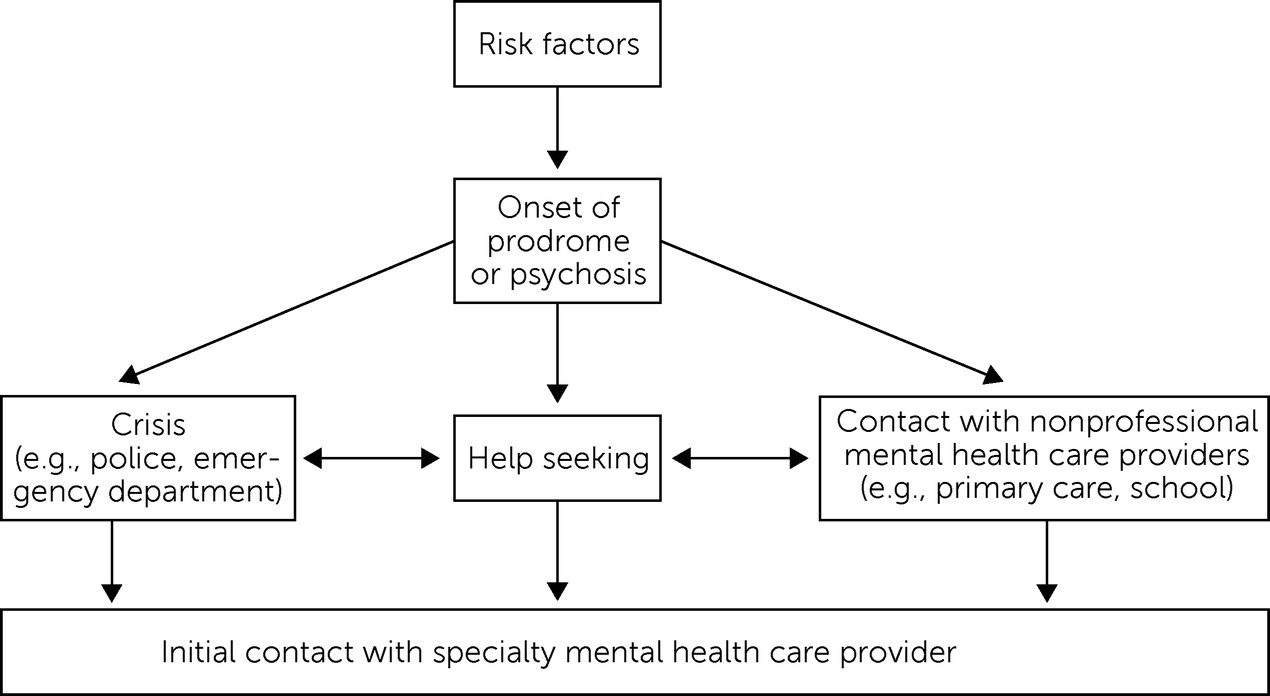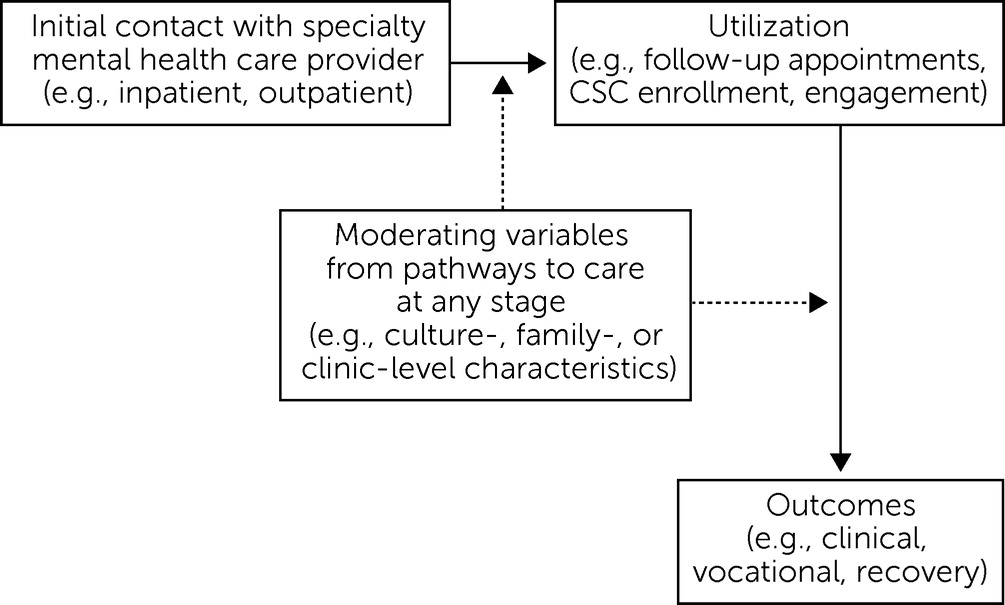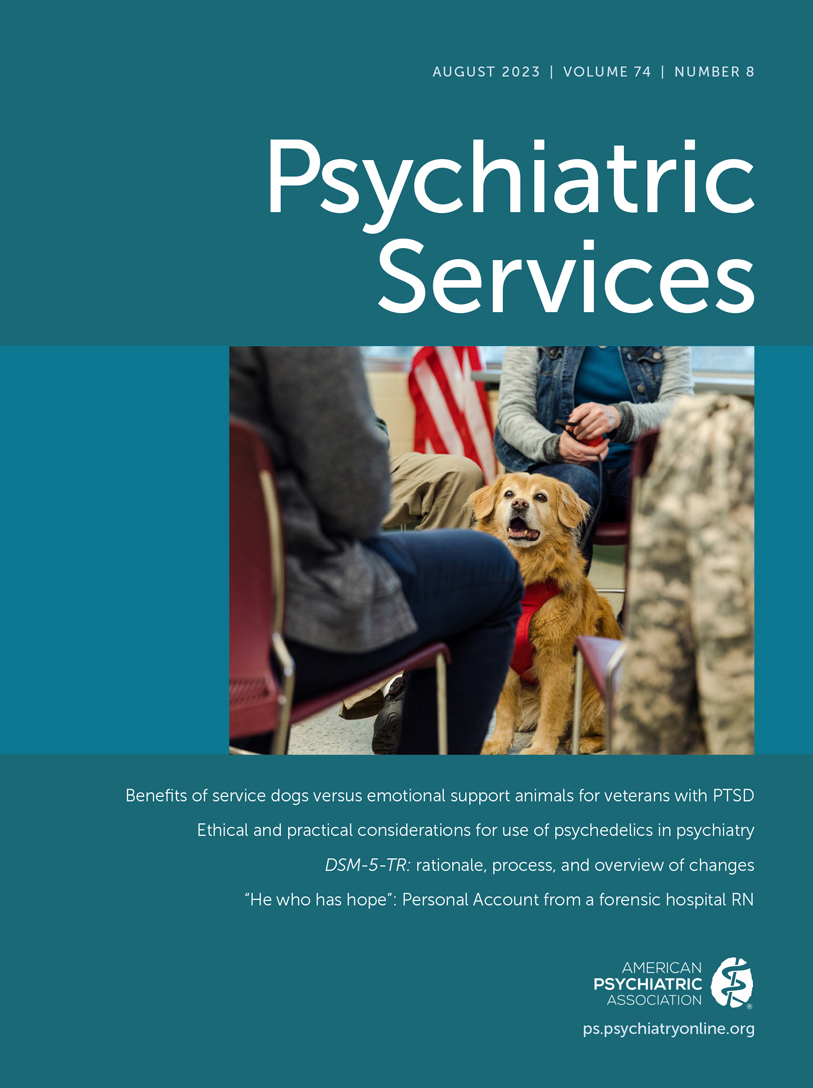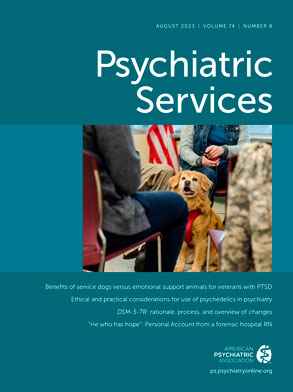Pathways Through Early Psychosis Care for U.S. Youths From Ethnically and Racially Minoritized Groups: A Systematic Review
Abstract
Objective:
Methods:
Results:
Conclusions:
HIGHLIGHTS


Methods
Results
Study Characteristics
| Study | Typea | Design | Sample size | % of sample belonging to ethnoracially minoritized group | Use of race | Analysis using race | Reported race categories of sample | Hispanic or Latino as race or ethnicity | Location |
|---|---|---|---|---|---|---|---|---|---|
| Browne et al., 2019 (29)b,c | Quant | Cross-sectional within cluster-randomized triald | 134 | 39 | Analytical | Yes | Caucasian, African American, other | Ethnicity | 17 clinics throughout the United States |
| Brunette et al., 2018 (30)e | Quant | Cross-sectional within cluster-randomized triald | 404 | 46 | Focus | Yes | White, African American, other | Ethnicity | 21 U.S. states |
| Cruz et al., 2017 (31)b | Quant | Observational, prospective | 44 | 66 | Not used | No | White, Black or African American, Asian, multiracial, other | Ethnicity | Boston |
| Goulding et al., 2010 (32)e | Quant | Observational, prospectivef | 109 | 94 | Focus | >90% one race | African American, White/Caucasian, Asian-American, African/Ethiopian | Not reported | Atlanta |
| Hernandez et al., 2019 (33)c,g | Qual | Observational, prospective | 84 | 100 | Focus | >90% one race | Latino | Racial-ethnic minority | San Fernando Valley, California |
| Heun-Johnson et al., 2021 (34)b | Quant | Observational, retrospective | 3,017 | 21 | Focus | Yes | Black, Hispanic, White | Race | Across United States |
| Jones et al., 2019 (35)e | Mixed | Case-control, retrospective | 130 | 67 | Focus | Yes | White, African American, Latino/a, East Asian, Southeast Asian, South Asian, Samoan | Race | San Francisco Bay Area |
| Jones et al., 2021 (45)b,g | Quant | Observational, prospectiveh | 761 | 72 | Analytical | Yes | White (non-Hispanic), Black (non-Hispanic), Hispanic, other | Ethnicity | New York State (multiple sites) |
| Li et al., 2011 (36)e | Quant | Observational, prospective | 199 | 31 | Focus | Yes | African American, Caucasian | Not reported | Pittsburgh |
| Liffick et al., 2017 (37)b | Quant | Observational, retrospective, case-control | 151 | 68 | Not used | No | African American, Caucasian, other | Not reported | Indianapolis |
| López et al., 2018 (38)b,g | Mixed | Observational, prospective | 148 | 100 | Focus | >90% one race | Latino | Racial-ethnic minority | San Fernando Valley, California |
| Marino et al., 2020 (39)e | Quant | Observational, prospectiveh | 938 | 74 | Analytical | Yes | White (non-Hispanic), Black (non-Hispanic), Hispanic, other | Ethnicity | New York State (multiple sites) |
| Myers et al., 2019 (7)b,g | Qual | Observational, prospective | 18 | 89 | Focus | Yes | Asian, Black or African American, Hispanic or Latino, White | Race | North Texas |
| Myers et al., 2017 (40)b | Quant | Observational, prospectivef | 33 | 100 | Analytical | >90% one race | African American, not specified | Not reported | Atlanta |
| Nagendra et al., 2018 (41)b | Quant | Observational, case-control analysis of baseline data from cluster-randomized triald | 404 | 46 | Focus | Yes | Caucasian, Black American | Not reported | 21 states |
| Oluwoye et al., 2020 (42)b,g | Quant | Observational, cohort, prospective | 211 | 57 | Analytical | Yes | White, Latino, Black, other (multiracial, Asian, American Indian/Alaska Native, Pacific Islander) | Race | Washington State (multiple sites) |
| Oluwoye et al., 2018 (44)b,e,g | Quant | Subanalysis of cluster-randomized triald | 404 | 61 | Focus | Yes | Non-Hispanic White, non-Hispanic Black, Asian, Alaska Native/Native American, Hawaiian/Pacific Islander, Hispanic Black, Hispanic other | Ethnicity | 21 states |
| van der Ven et al., 2020 (43)b | Quant | Observational, retrospective | 8,021 | 23 | Focus | Yes | Non-Hispanic White, Hispanic, African American, Asian | Ethnicity | Across United States |
Utilization
Outcomes
Clinic-Level Moderators
Family-Level Moderators
Culture-Level Moderators
Discussion
Key Findings
Gaps
Limitations
Future Research
Conclusions
Supplementary Material
- View/Download
- 236.98 KB
References
Information & Authors
Information
Published In
History
Keywords
Authors
Competing Interests
Funding Information
Metrics & Citations
Metrics
Citations
Export Citations
If you have the appropriate software installed, you can download article citation data to the citation manager of your choice. Simply select your manager software from the list below and click Download.
For more information or tips please see 'Downloading to a citation manager' in the Help menu.
View Options
View options
PDF/EPUB
View PDF/EPUBLogin options
Already a subscriber? Access your subscription through your login credentials or your institution for full access to this article.
Personal login Institutional Login Open Athens loginNot a subscriber?
PsychiatryOnline subscription options offer access to the DSM-5-TR® library, books, journals, CME, and patient resources. This all-in-one virtual library provides psychiatrists and mental health professionals with key resources for diagnosis, treatment, research, and professional development.
Need more help? PsychiatryOnline Customer Service may be reached by emailing [email protected] or by calling 800-368-5777 (in the U.S.) or 703-907-7322 (outside the U.S.).

